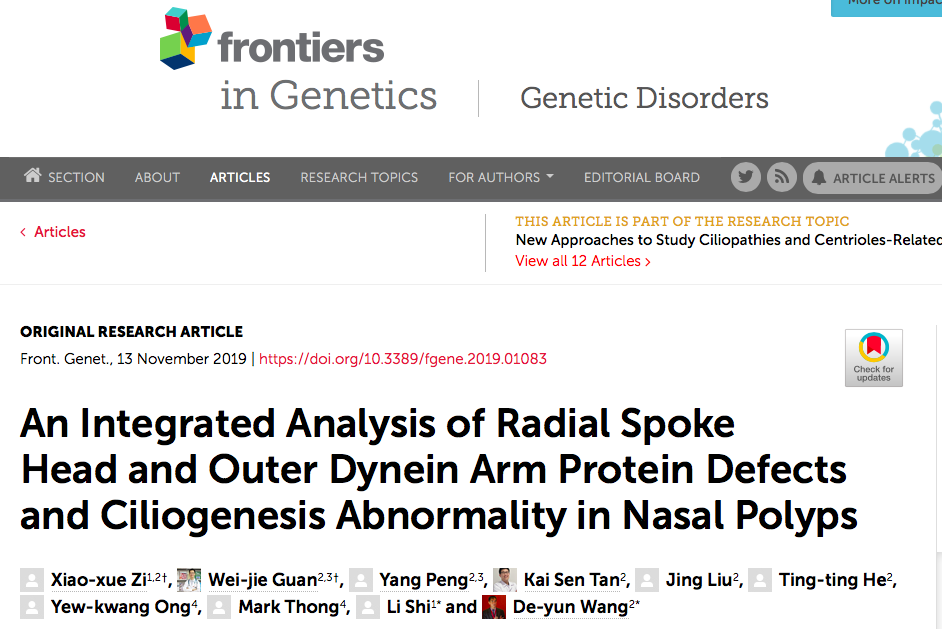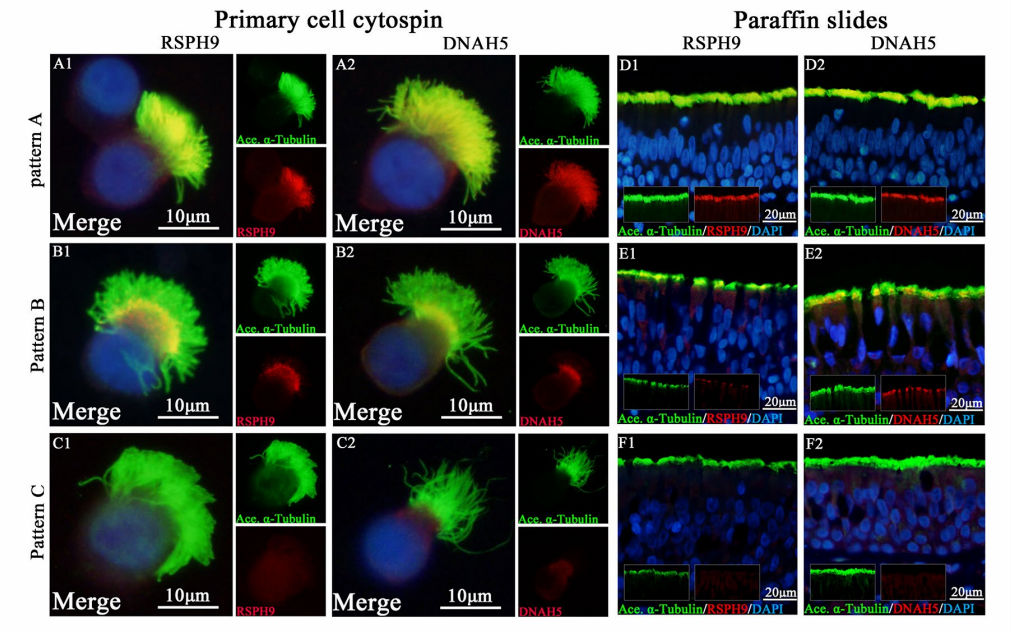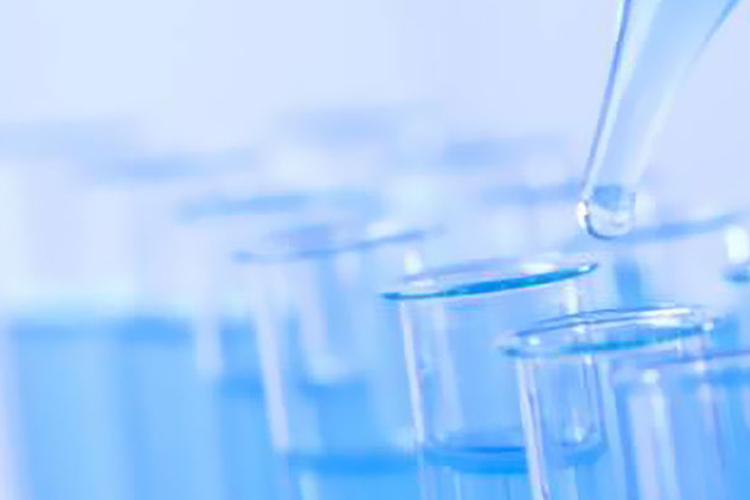The team led by Professor Wang Deyun of SKLRD publishes its new research progress of nasal polyp epithelium in the Frontiers
2019-11-271856Recently, the original research paper “An Integrated Analysis of Radial Spoke Head and Outer Dynein Arm Protein Defects and Ciliogenesis Abnormality in Nasal Polyps” was published online in the Frontiers in Genetics (IF: 3.5), whose corresponding authors are Professor Wang Deyun, the director of the laboratory of otorhinolaryngology of the University of Singapore and a specially appointed professor of SKLRD, and Professor Shi Li from the ENT Hospital of Shandong affiliated to Shandong University. The co-first author of the paper is Dr. Zi Xiaoxue of Shandong University and Guan Weijie, an associate research fellow of the SKLRD.

Nasal polyp is a common chronic upper respiratory inflammatory disease in the ENT department, which is often caused by the defect of defense function of the host. The impairment of epithelial barrier function and the reduction of mucociliary clearance rate are the main pathological features of nasal polyp. However, the mechanism for the impairment of clearance mediated by cilium remains unclear. The research has used the biopsy tissue sample of the nasal polyp patients acquired clinically and the inferior nasal concha tissue sample of patients of deviation of nasal septum (as a reference group) and conducted immunofluorescence double staining, RT-qPCR and single cell immunofluorescence staining to reveal that in the environment of chronic airway inflammation (particularly in the micro environment of airway with eosinophilic inflammation), the ultrastructure of celium of nasal polyp is abnormal in expression. More importantly, such kind of abnormalities usually occur after the up-regulation of related genes generated by celium (which is closely related with airway inflammation or infection or hereditary diseases).
Considering that the program team has earlier revealed that the abnormal expression degree of different celium ultrastructure markers (such as DNAH5 and RSPH9) is closely related with the seriousness and classical classification of nasal polyp. However, there are many kinds of celium super-micro markers and different markers reflect the structural lesion of celium at different parts. The meaning of the research is that it has confirmed the comparability of different markers of celium ultrastructure in the evaluation of the degree of nasal polyp lesion. The research results indicate that though there are differences in the expression of features, in a clinical research institution with limited resources, the researchers may roughly confirm the seriousness of the condition of nasal polyp by evaluating the expression features of common markers (such as RSPH9). Besides, with the aid of transmission electron microscopy technology, the research team further proved that there is indeed an absence of ultrastructure component in the celium of airway epithelial cells with abnormal protein fluorescence staining of celium ultrastructure markers.

The single cell fluorescence staining and tissue wax fluorescence staining indicate that abnormal expressions of celium ultrastructure markers widely exist in the airway epithelium of nasal polyp patients
The results of the research will help clarify the process and result of abnormality of celium development and reveal the relevancy between the abnormal expression of protein of celium ultrastructure and the nasal polyp. Considering that it’s difficult to relieve the chronic nasal inflammation of nasal polyp patients through conventional treatment means and the current status of a high recurrence rate of nasal polyp after patients receive a surgery, it may become an important new direction of treatment for nasal polyp patients to develop interventional means to improve the function of celium cleaning, which can effectively complement the existing treatment means. Based on the concept of “the same airway, the same disease”, the results of the research will also provide a new idea for clinical evaluation and intervention of lower airway inflammatory diseases (such as asthma, chronic obstructive pulmonary disease, bronchiectasia).

Primary and secondary pathogens cause abnormal expression of celium markers, thus conveying the abnormality of celium ultrastructure and promoting the development of nasal polyps
















